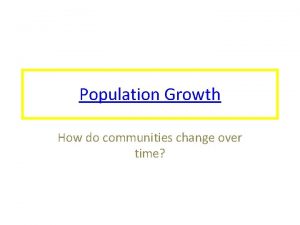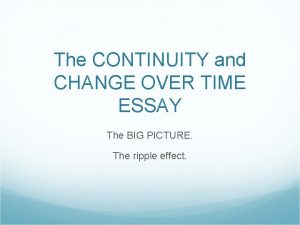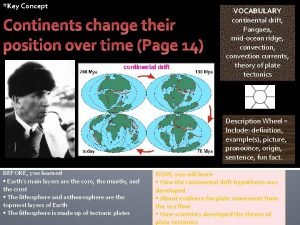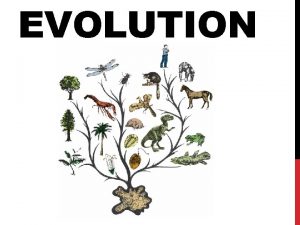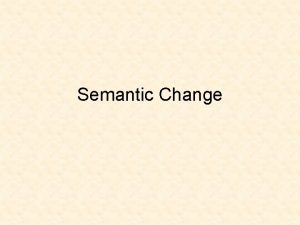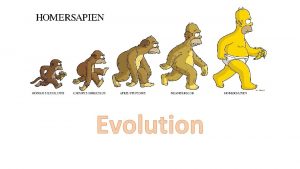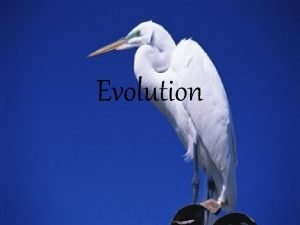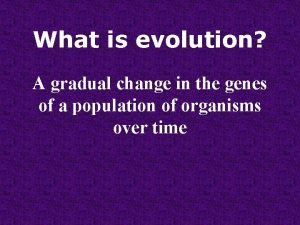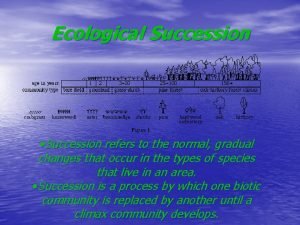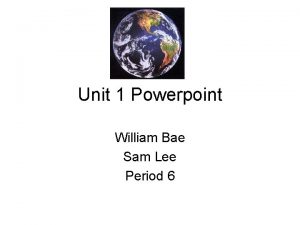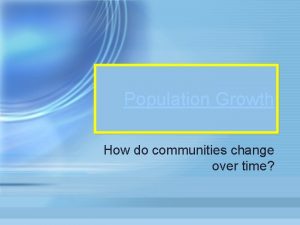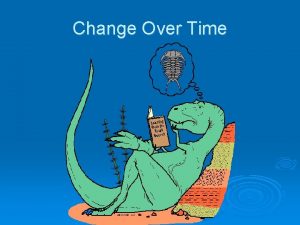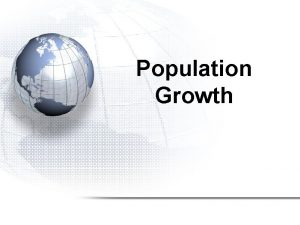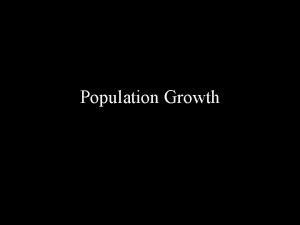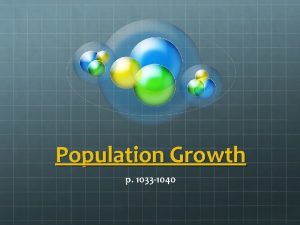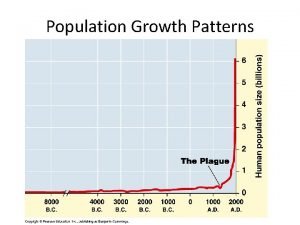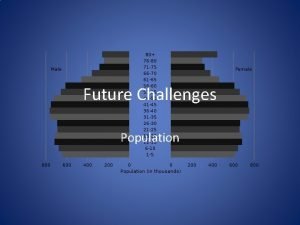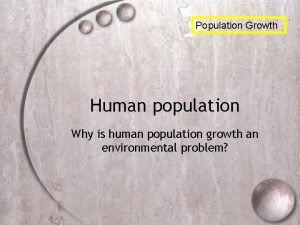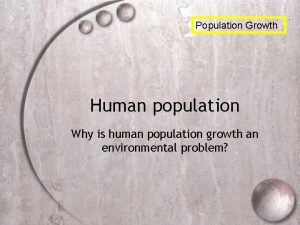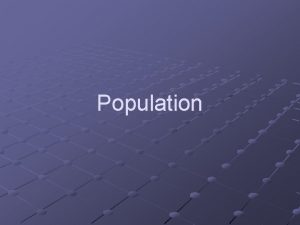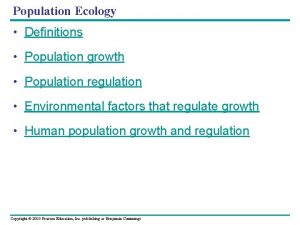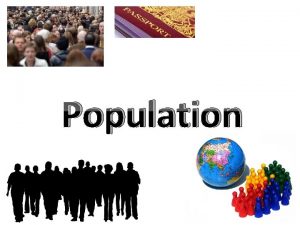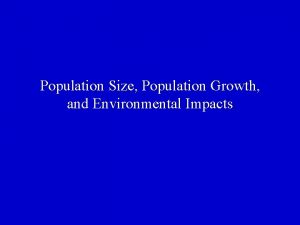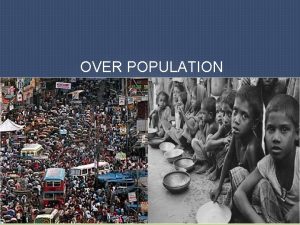Population Growth How do communities change over time

















- Slides: 17

Population Growth How do communities change over time?

• Groups of 2, 3, or 4…spread out…face each other! 1. Chunk/Divide up the text. Say Something… 2. Decide how to read (Independently? Aloud? Take turns? ) 3. Begin. When it’s your turn to “say something” do one of the flowing using the discussion stems provide: 1. Make a prediction 2. Ask a question 3. Clarify something you misunderstood 4. Make a comment 5. Make a connection

Population growth • Populations will grow until they reach their biotic potential, unless they are limited by factors in the environment • This type of growth is known as a J-curve called EXPONENTIAL GROWTH

Exponential Growth (J-curve) • As a population gets larger it also grows faster. • Resources (food, water, space) are unlimited and plentiful.

Population growth • As resources (called limiting factors) become scares, the population growth will slow. • This type of growth is known as a S-curve. called LOGISTIC GROWTH

Logistic Growth (S-curve) • Population growth eventually slows/stops and stabilizes when it reaches its carrying capacity • Resources (food, water, space) are scarce and in limited supply.

Logistic Growth • Occurs when a population’s growth slows or stops following a period of exponential growth As resources become less available, the growth of a population slows or stops

Population growth Carrying capacity is defined as the number of individuals an environment can support.

Population growth • Limiting factors in the environment help to maintain ecosystem stability by allowing populations to fluctuate around the carrying capacity. • This is called dynamic equilibrium.

What is the CARRYING CAPACITY of the deer on Walla Island?

LIMITING FACTORS • A limiting factor is a factor that causes population growth to decrease. • 2 TYPES: – Density-Independent – Density-Dependent

DENSITY – DEPENDENT LIMITING FACTORS • DDLFs are resources that have greater effects as the population size/density increases. • Affects larger population sizes/densities

EXAMPLES of DENSITY – DEPENDENT LIMITING FACTORS • • Availability of Food Availability of Water Availability of Space Competition Disease Predation Migration

DENSITY – INDEPENDENT LIMITING FACTORS • Resources/factors that affect all populations, regardless of the population density (size).

DENSITY – INDEPENDENT LIMITING FACTORS • Resources/factors that affect all populations, regardless of the population density (size). • Affects all population sizes/densities.

EXAMPLES of DENSITY – INDEPENDENT LIMITING FACTORS • Natural Disasters (floods, hurricanes, earthquakes, tornadoes, forest fires, etc. ) • War and Human Activities • Weather (drought) • Temperature (frost)

Practice! • Complete the practice worksheet (both sides). • Finish for Homework
 Communities change over time
Communities change over time What are the steps of primary succession
What are the steps of primary succession Continuity and change over time definition
Continuity and change over time definition A change of position over time
A change of position over time The gradual change in a species over time
The gradual change in a species over time What is a semantic shift
What is a semantic shift Change in hereditary features over time
Change in hereditary features over time A gradual change in a community over time.
A gradual change in a community over time. The process of change over time is
The process of change over time is Change in hereditary features over time
Change in hereditary features over time Evolution is gradual
Evolution is gradual Why do classification systems change over time?
Why do classification systems change over time? The gradual change in living communities
The gradual change in living communities Chapter 4 section 1 population dynamics study guide
Chapter 4 section 1 population dynamics study guide Section 1 population dynamics
Section 1 population dynamics Population ecology section 1 population dynamics
Population ecology section 1 population dynamics Chapter 4 section 1 population dynamics answer key
Chapter 4 section 1 population dynamics answer key Rule of 70
Rule of 70
